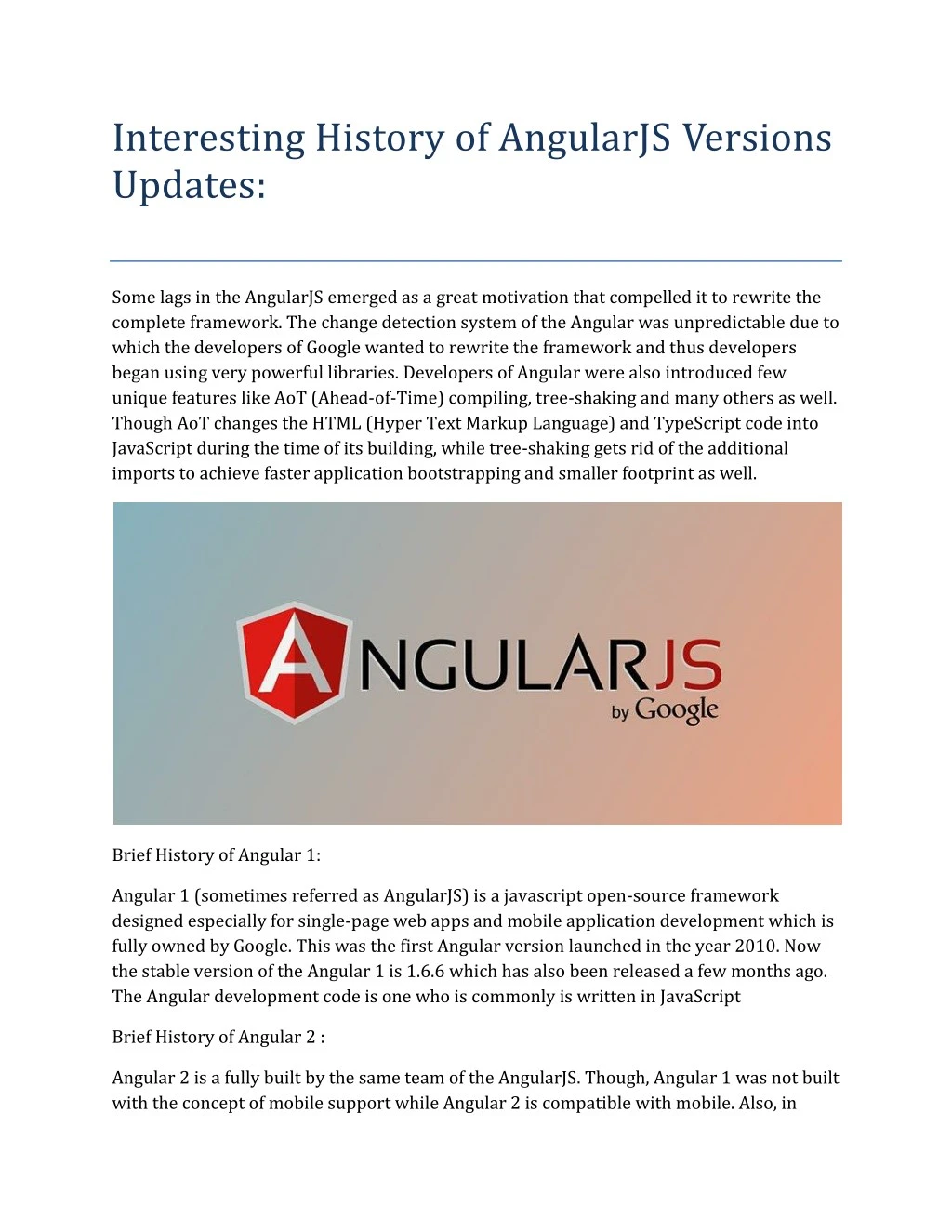

The current Angular Versions Supported are: Long Term Support includes only critical fixes and security patches that are released.
#ANGULARJS VERSIONS AND CHANGES PATCH#
active support includes regularly scheduled updates and patch releases. This consists of 6 months of active support and followed by 12 months of long-term support (LTS). All these updates are on par with the latest market trends, making developers migrate to the newest version.Īll the major releases of Angular are supported for 18 months. Every version comes with some new and advanced features. Thus, we can see that Angular has evolved a lot from its basic versions. It was made available in the market from 14th November 2020.

It features differential loading of all application code, web workers, supports TypeScript 3.4, dynamic imports for lazy routes, and Angular Ivy as an opt-in preview.

After Angular 1.0, in 2016, Angular 2 was released.This version came out on October 20, 2010. Some people call this version Angular 1.0. Google developed this web application framework in 2009.We will cover all that in this blog, but first, let us learn when each version came out. There are many versions of this framework, and to know which one is the best for our needs, we need to know their features and differences. This course will help you to achieve excellence in this domain.
#ANGULARJS VERSIONS AND CHANGES ANDROID#
If you would like to Enrich your career with an Android certified professional, then visit Mindmajix - A Global online training platform: “ Angular Training” Course. Advantages And Disadvantages Of Angular Versions.Brief Introduction Of All Angular Versions.


 0 kommentar(er)
0 kommentar(er)
